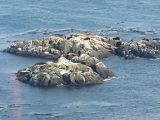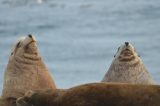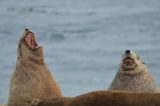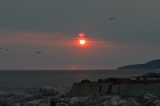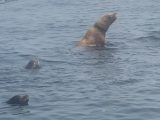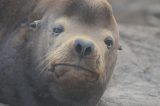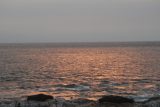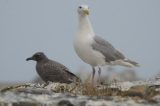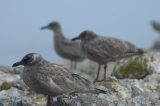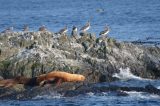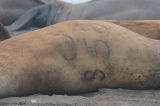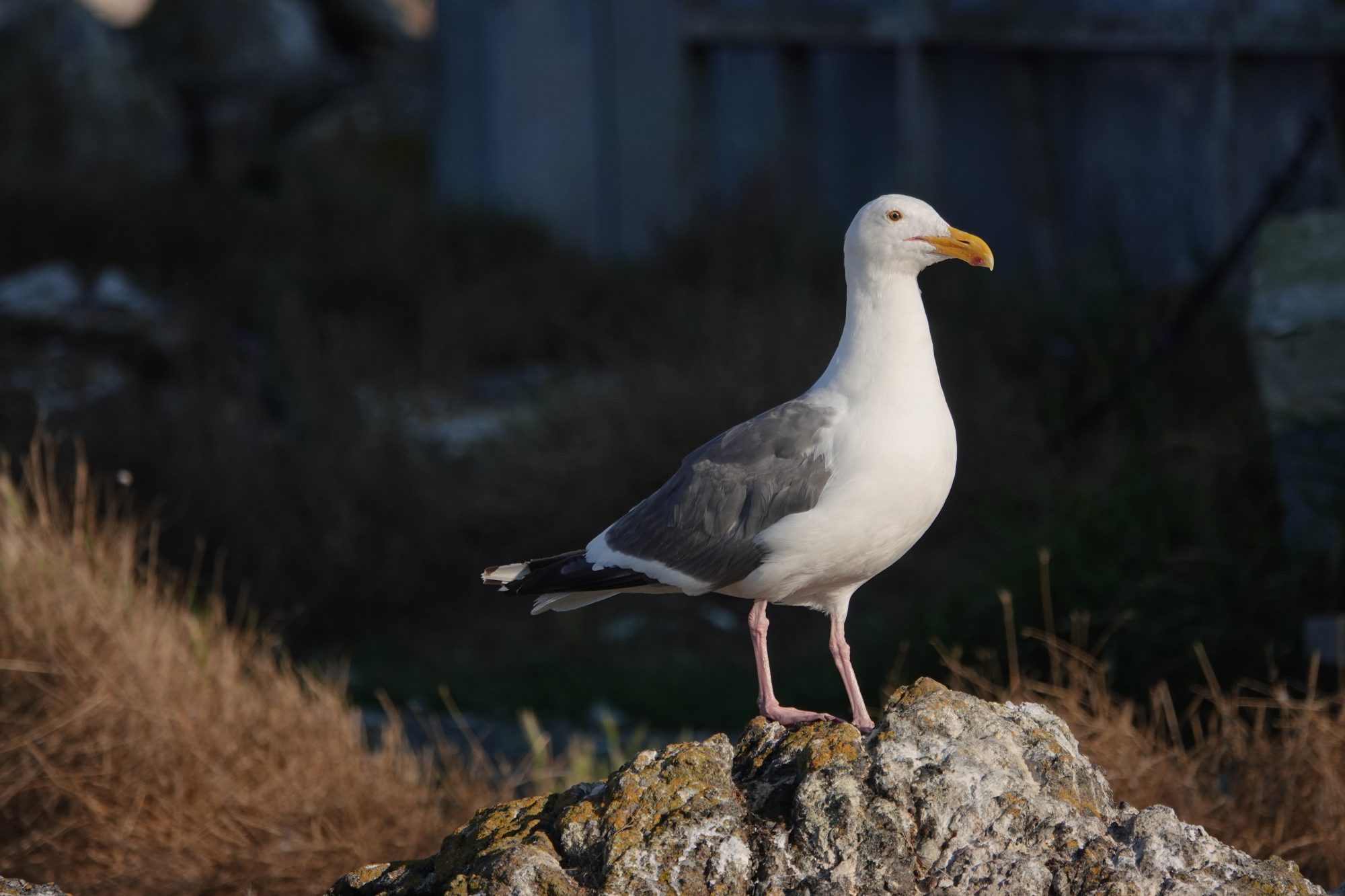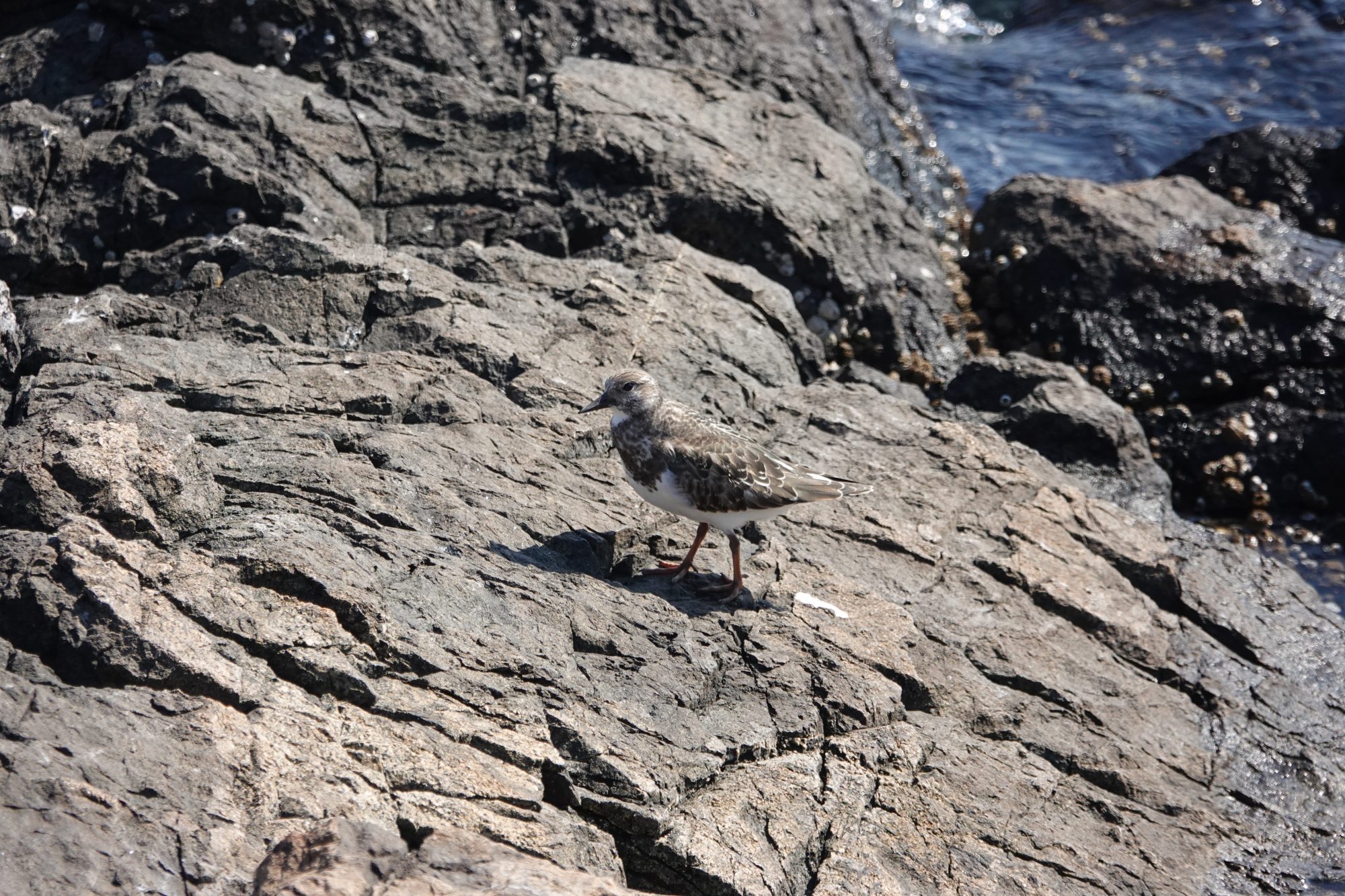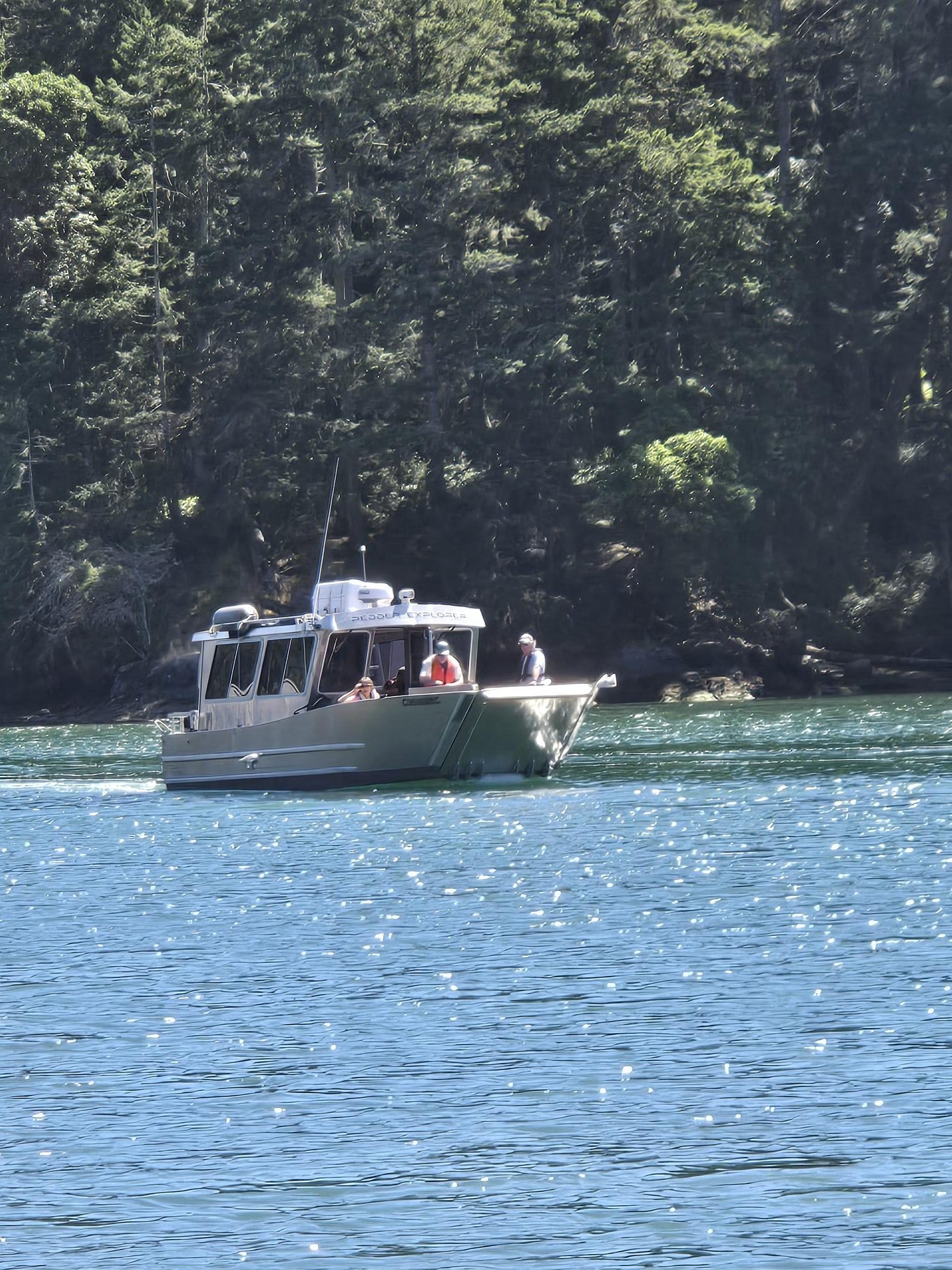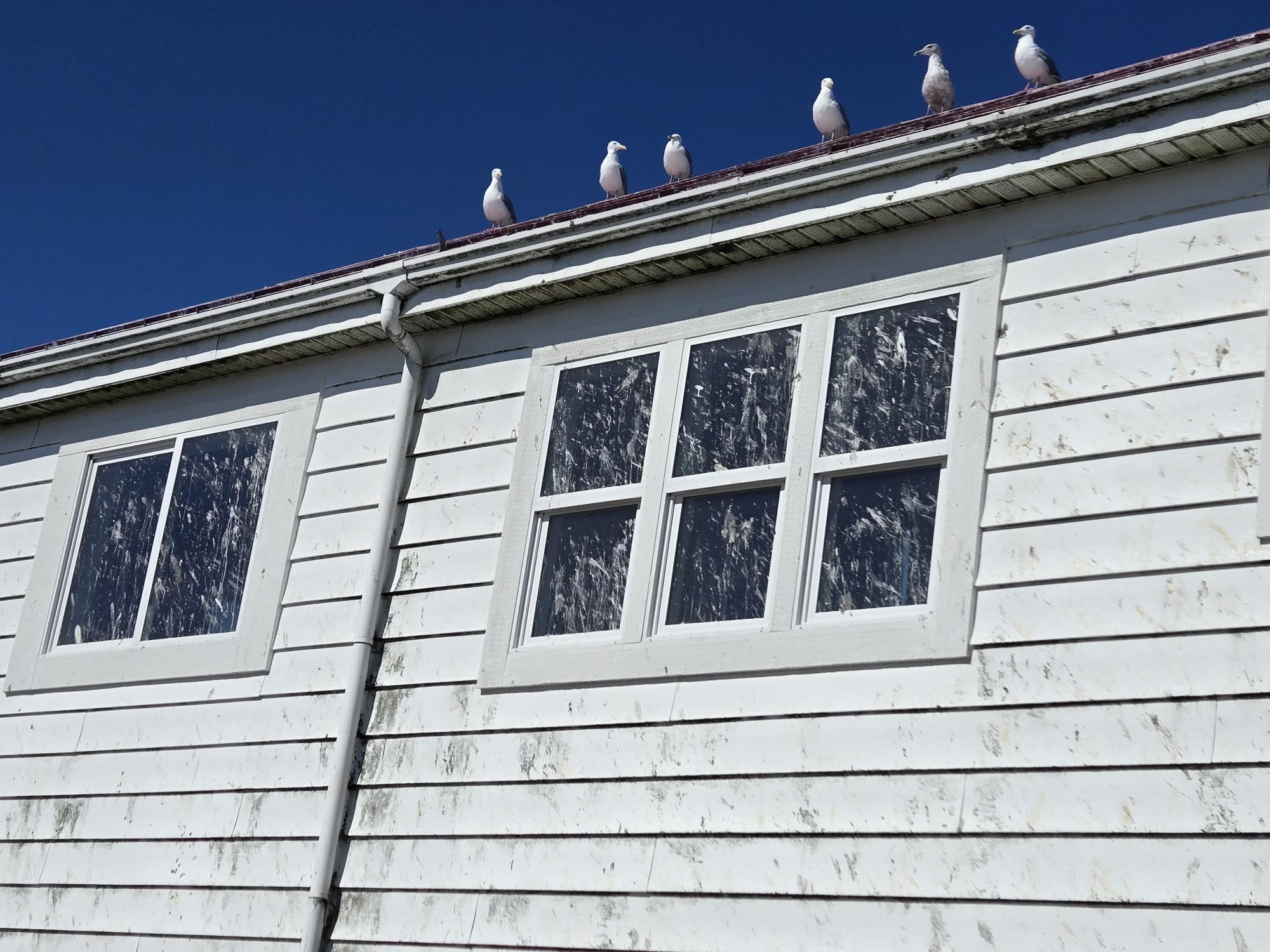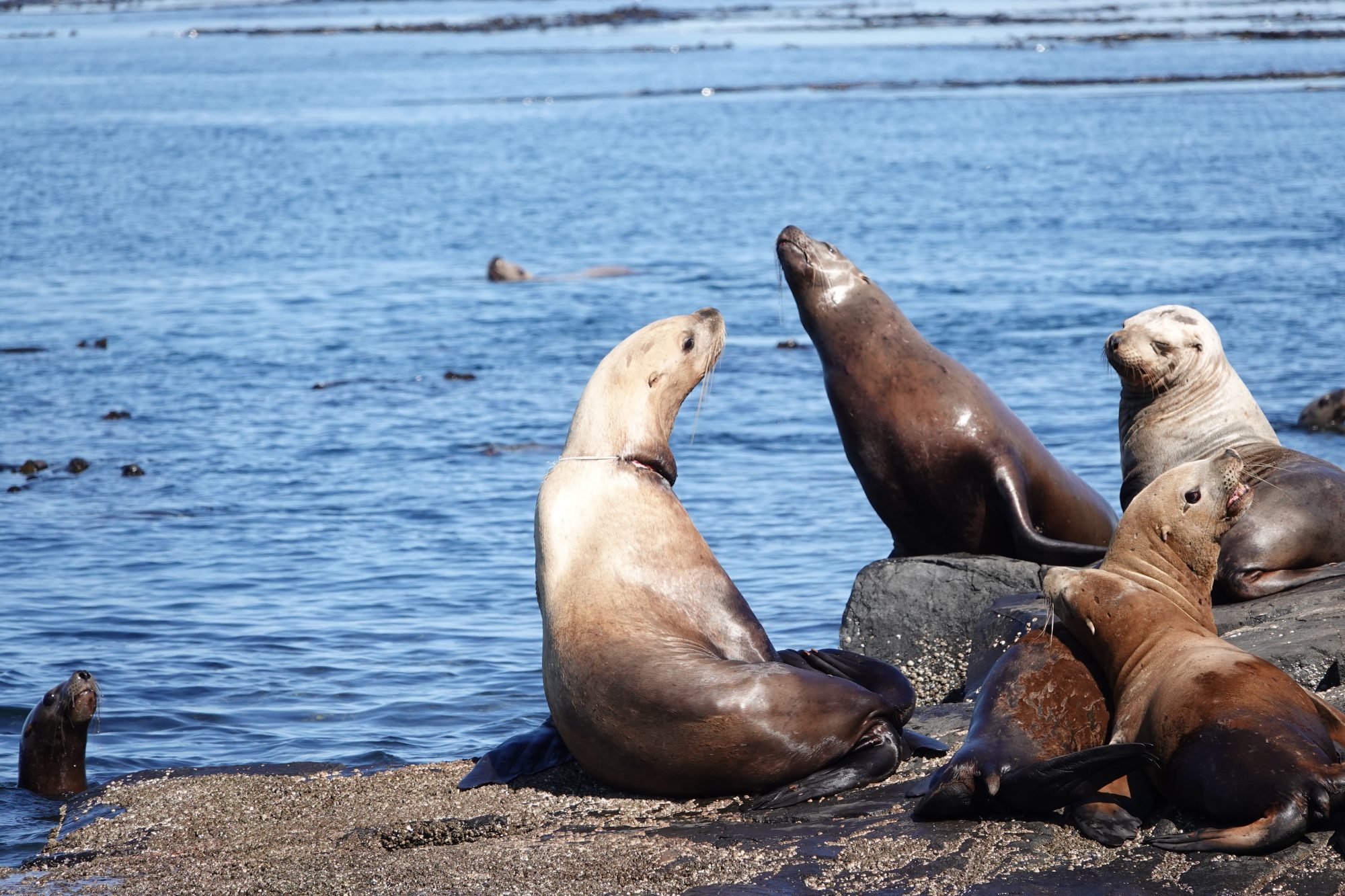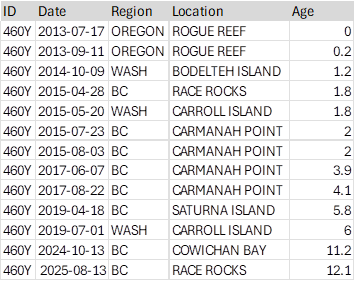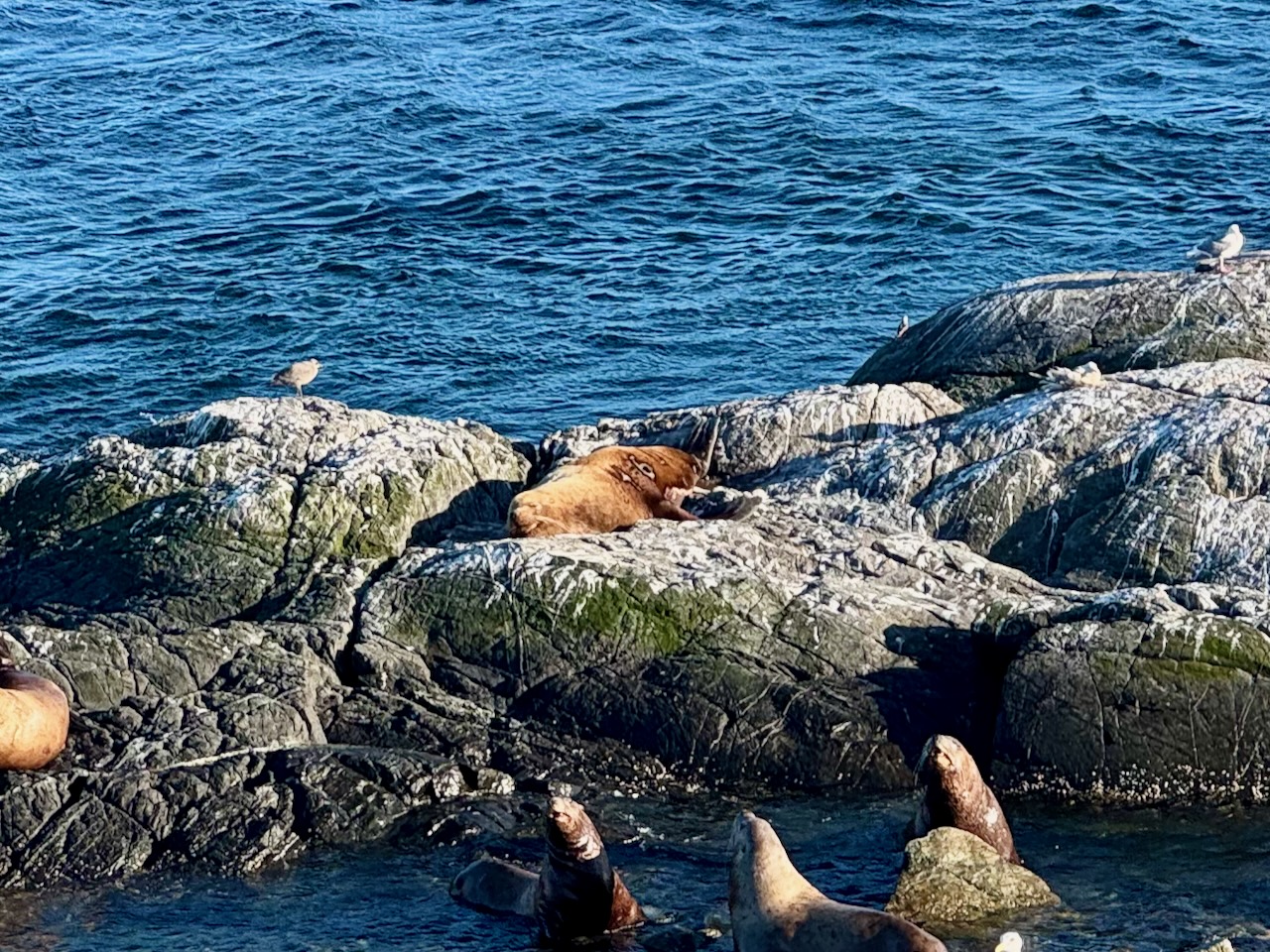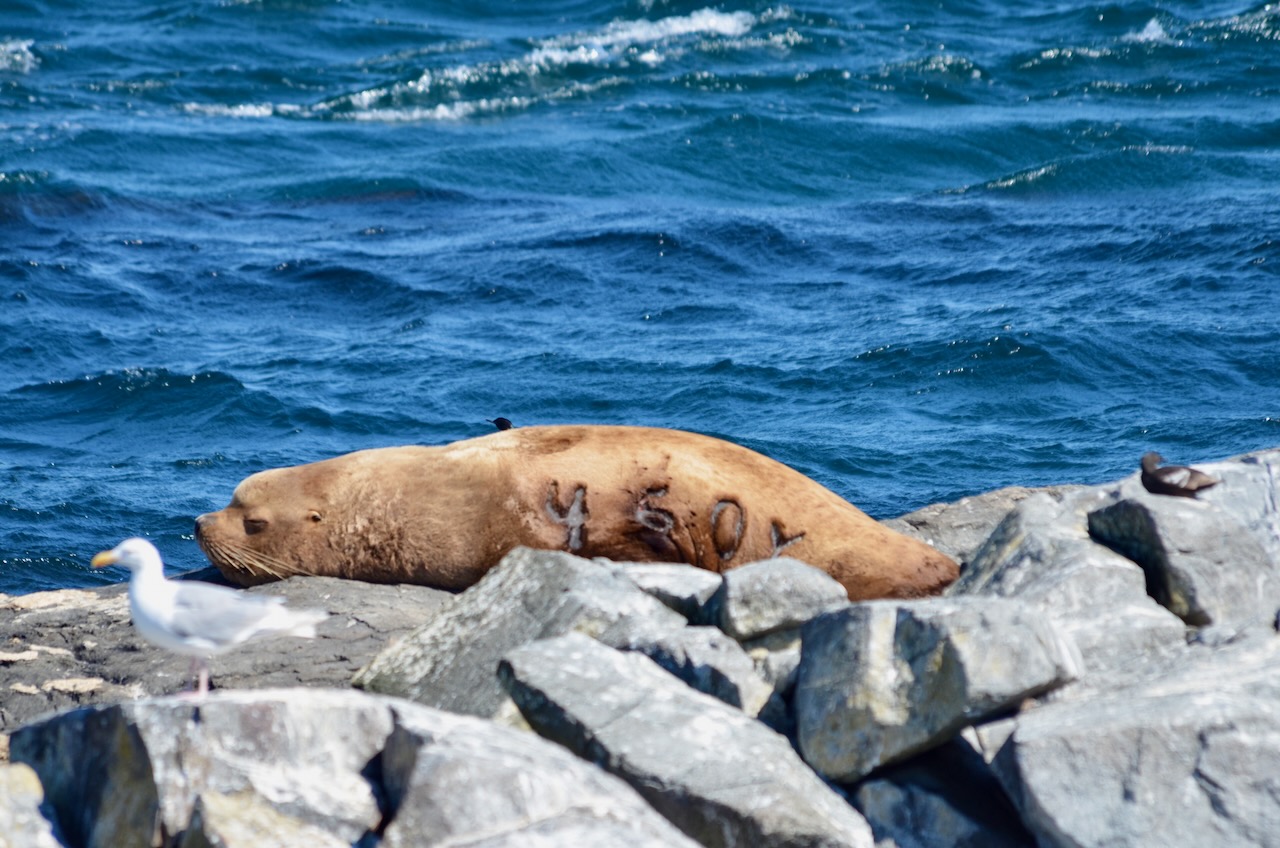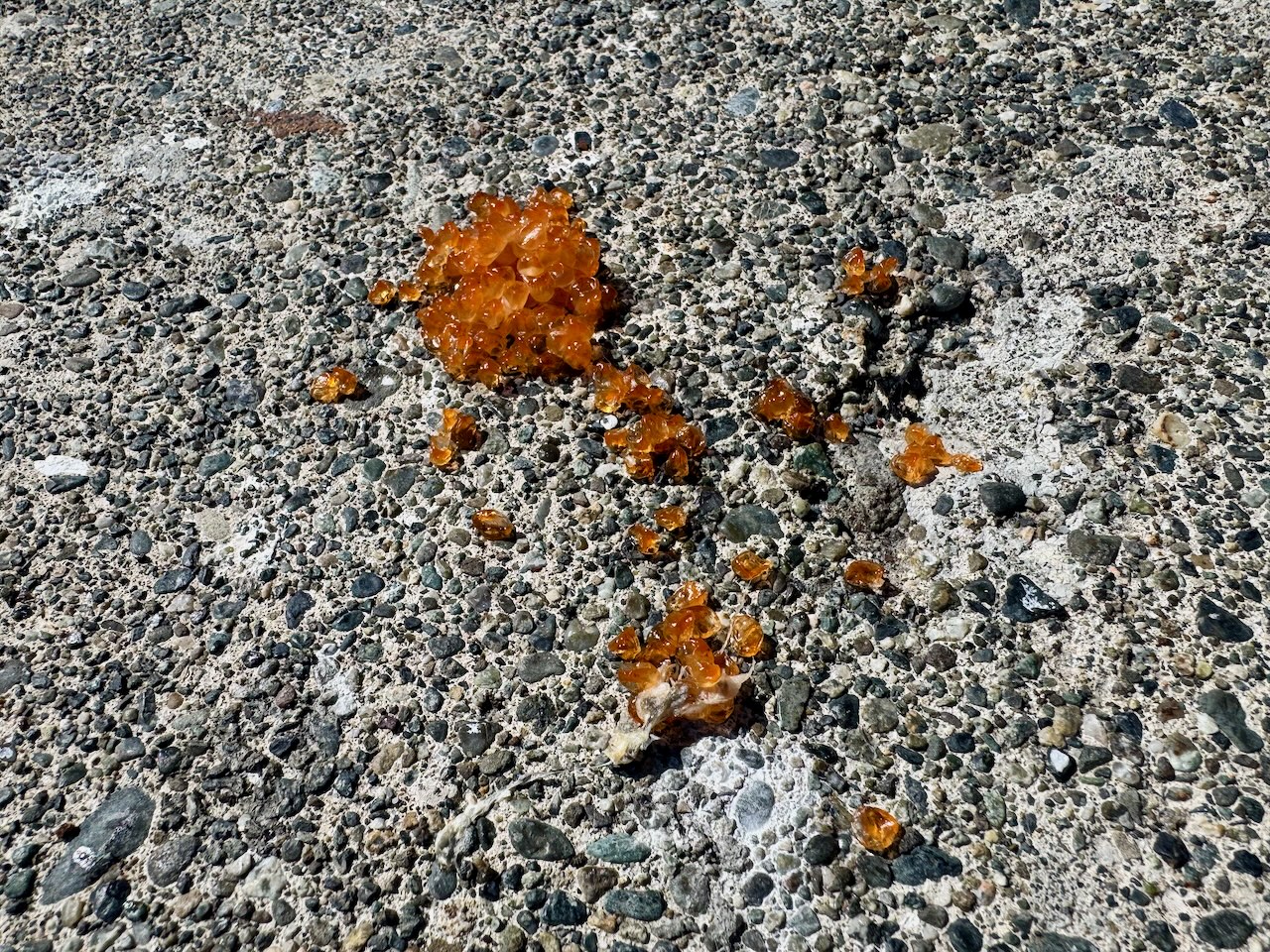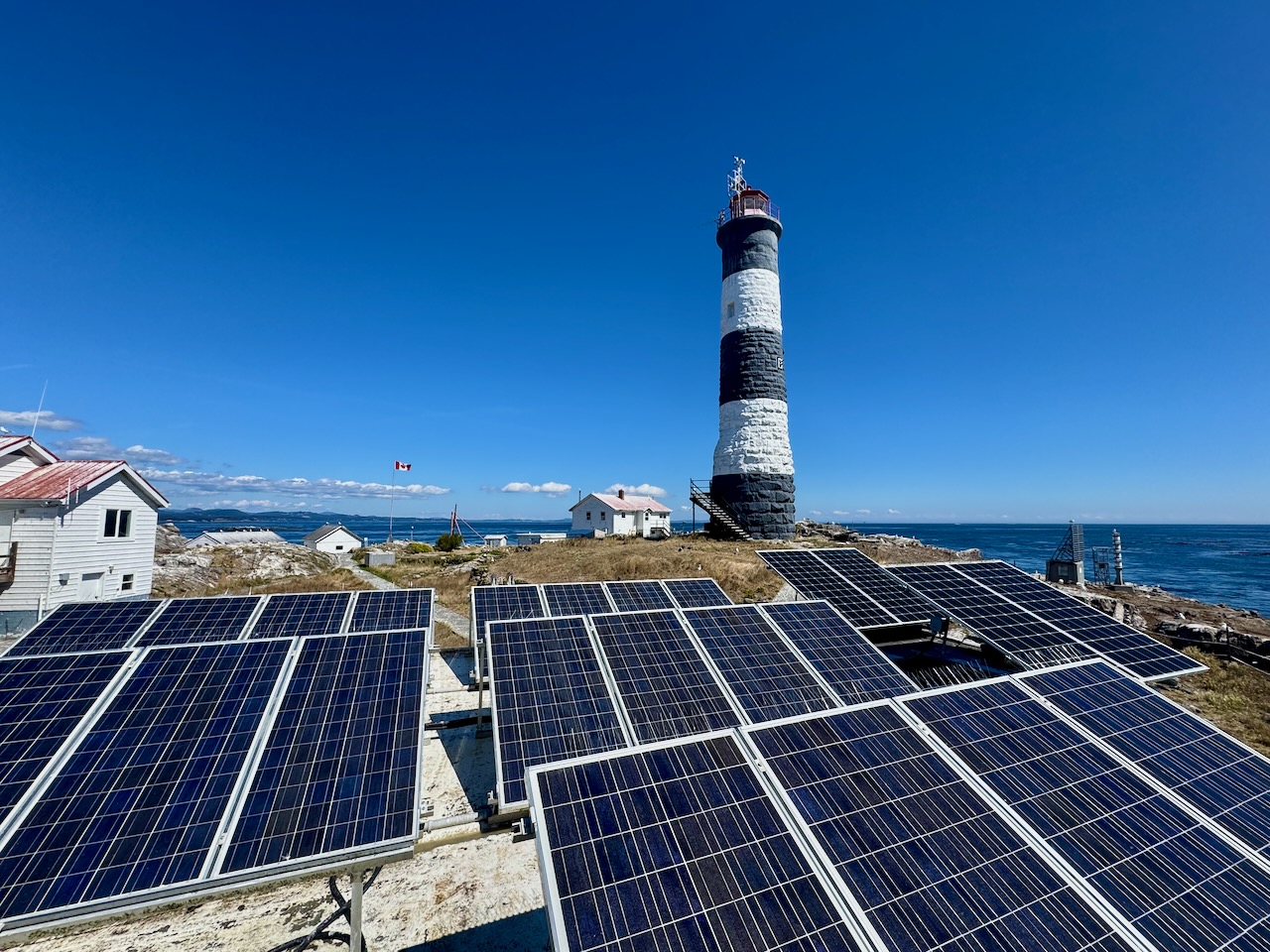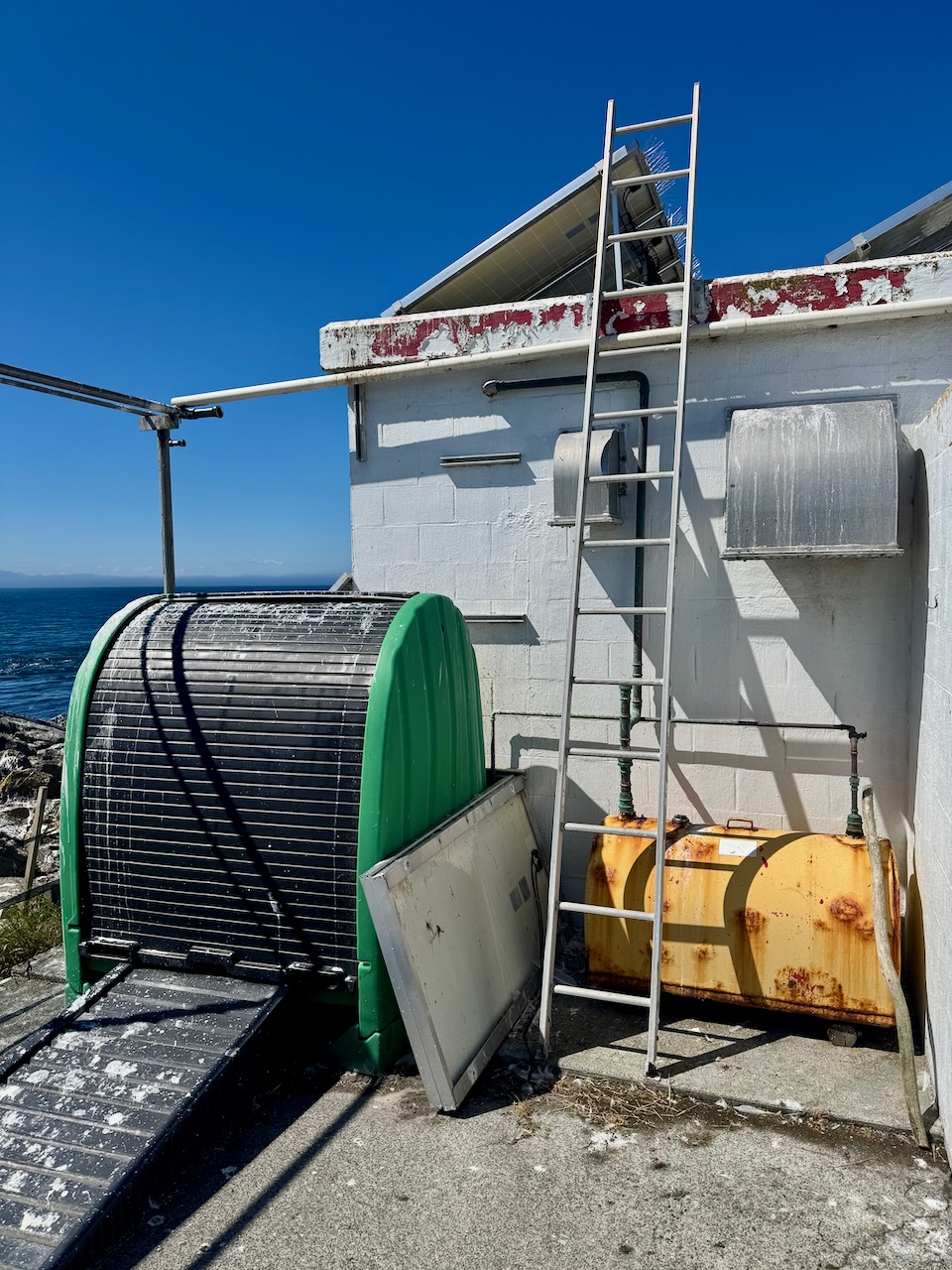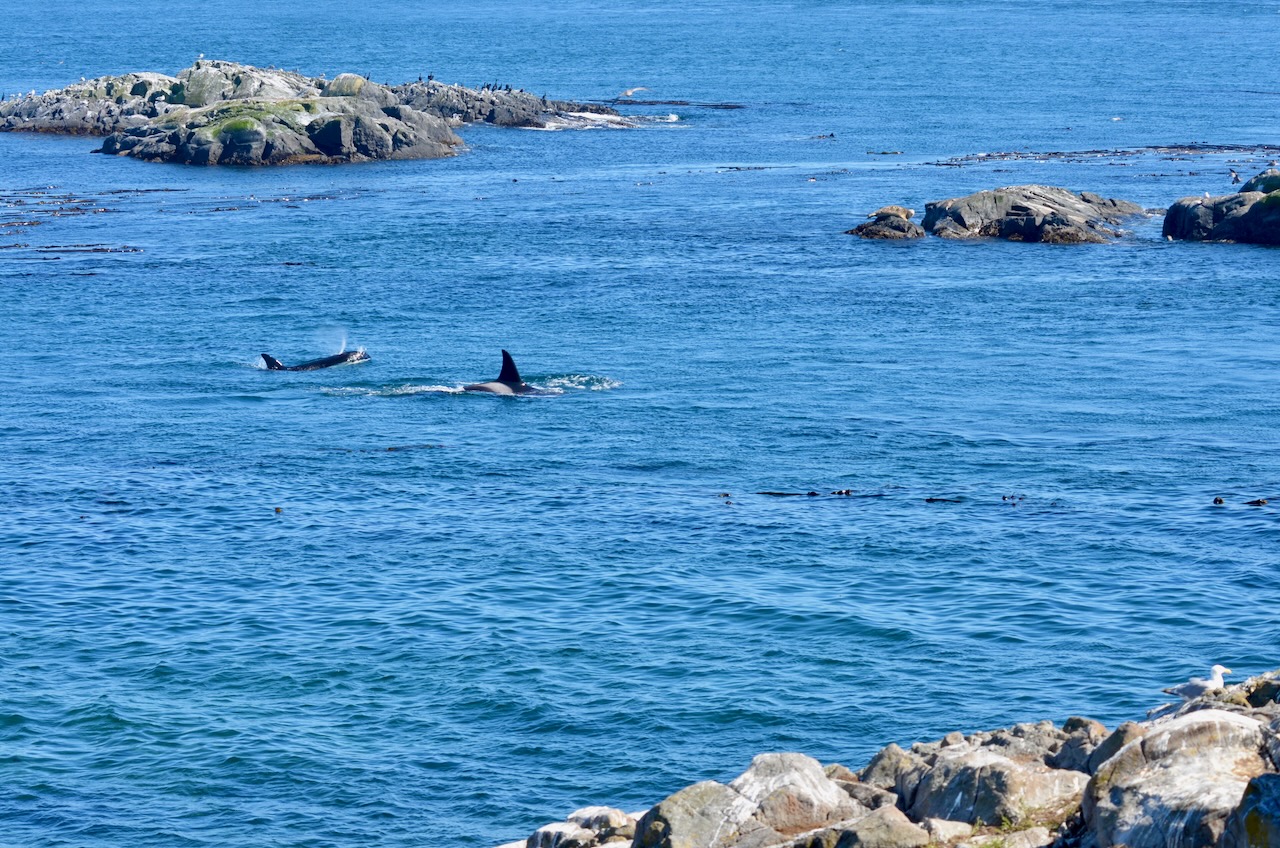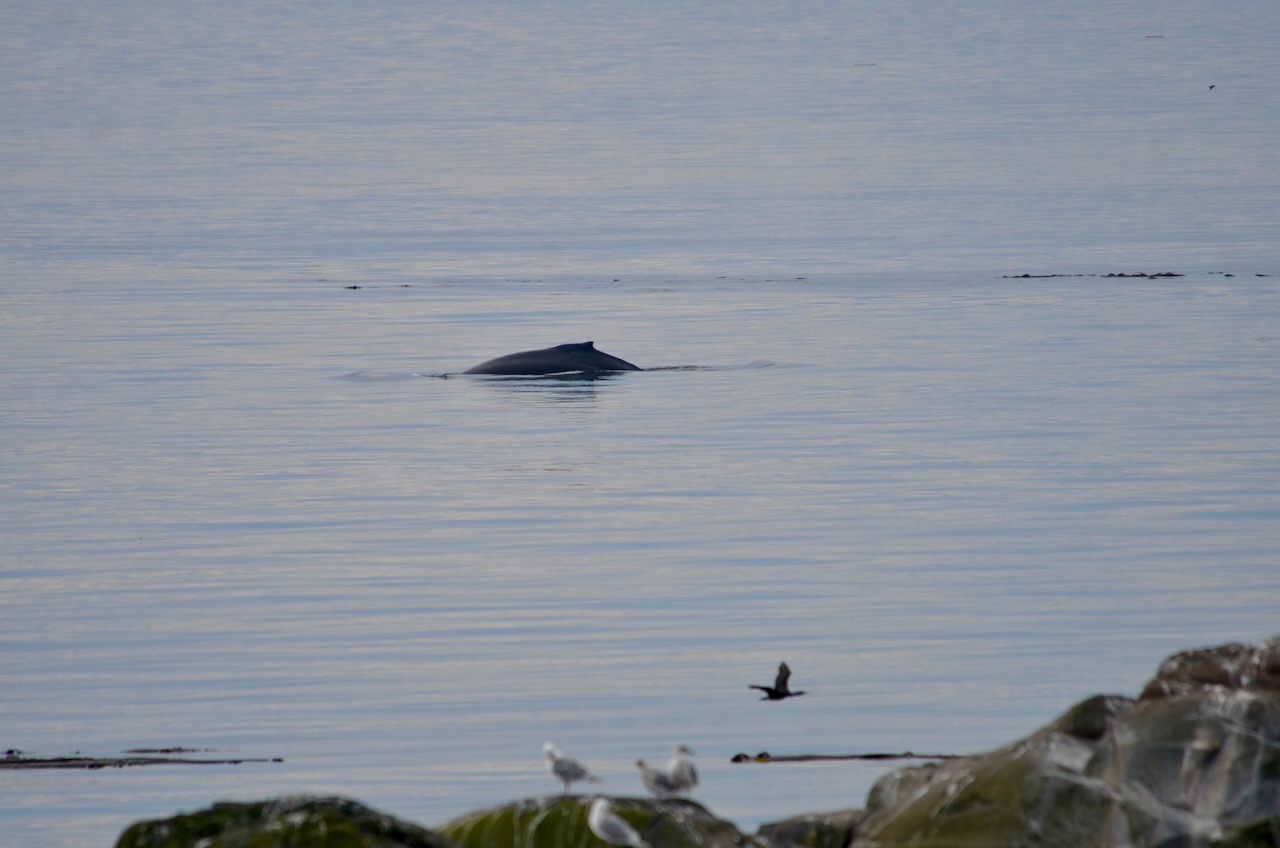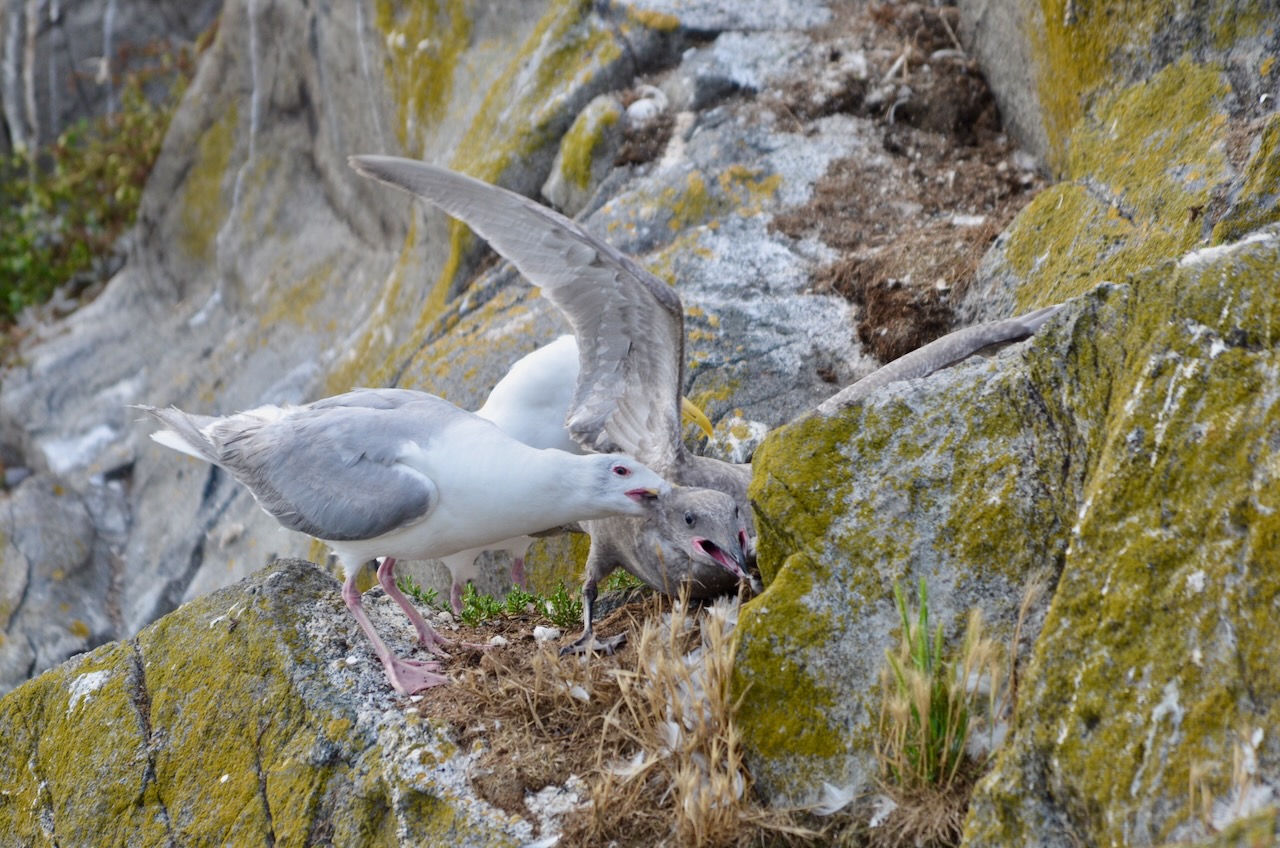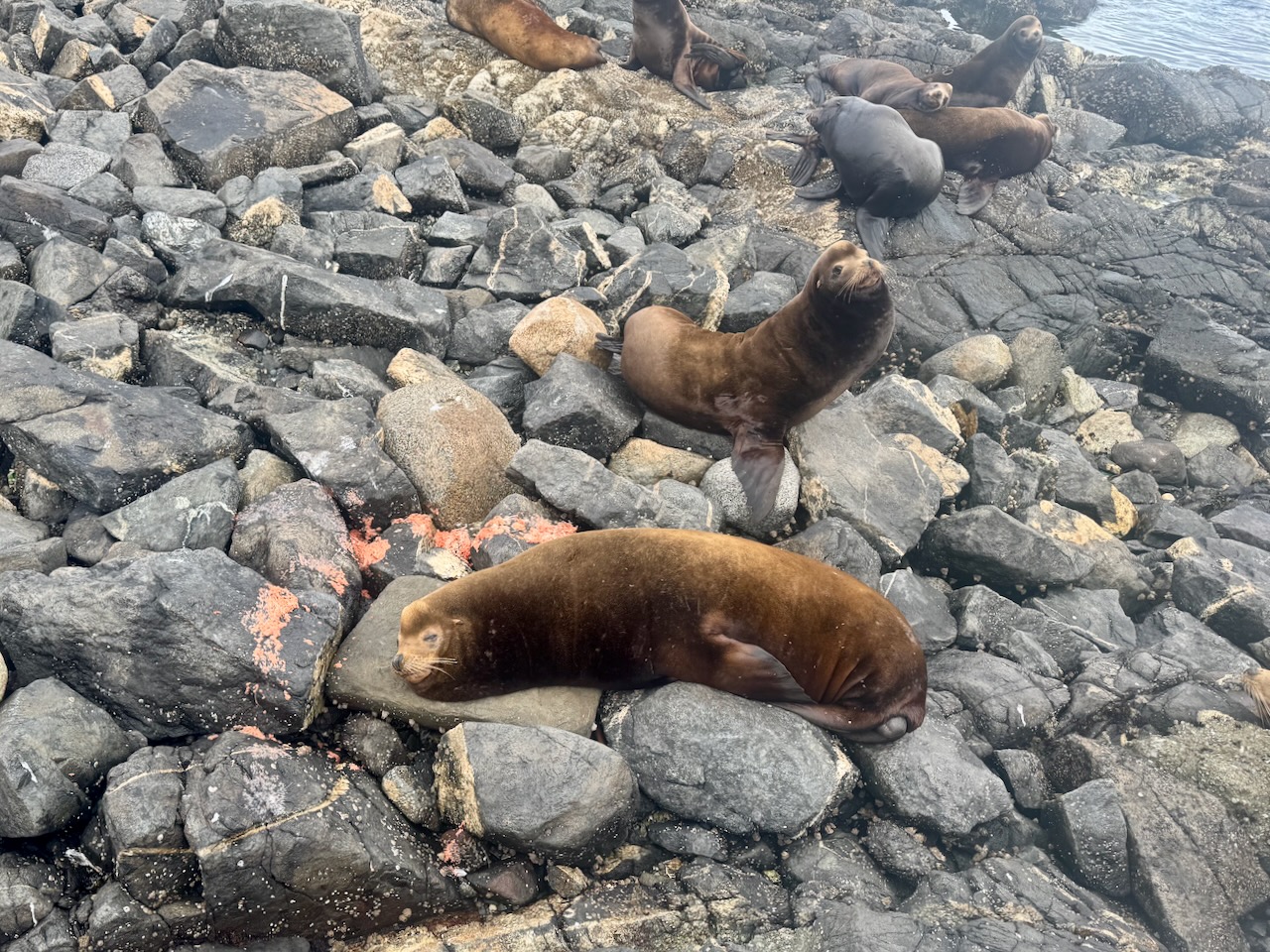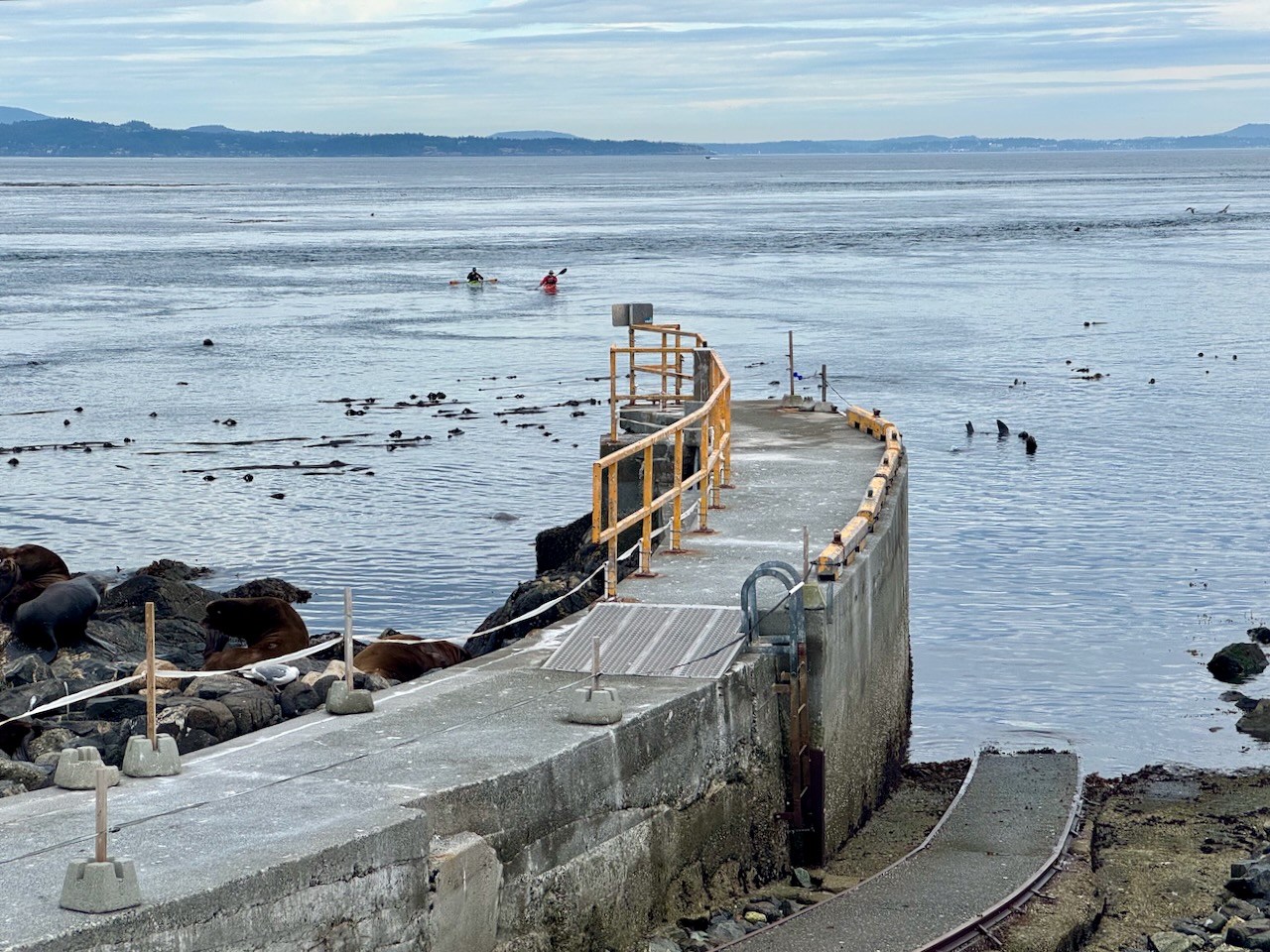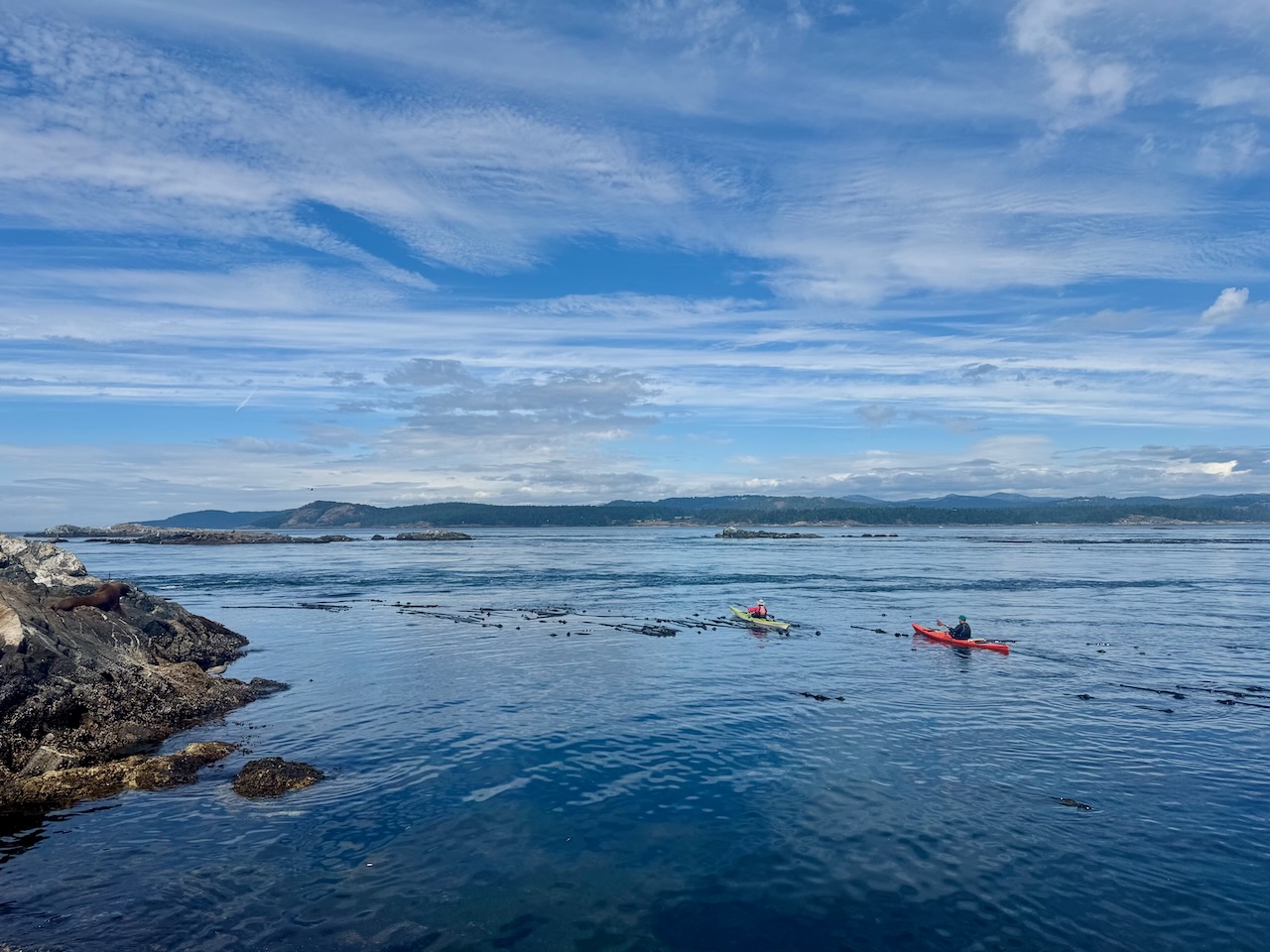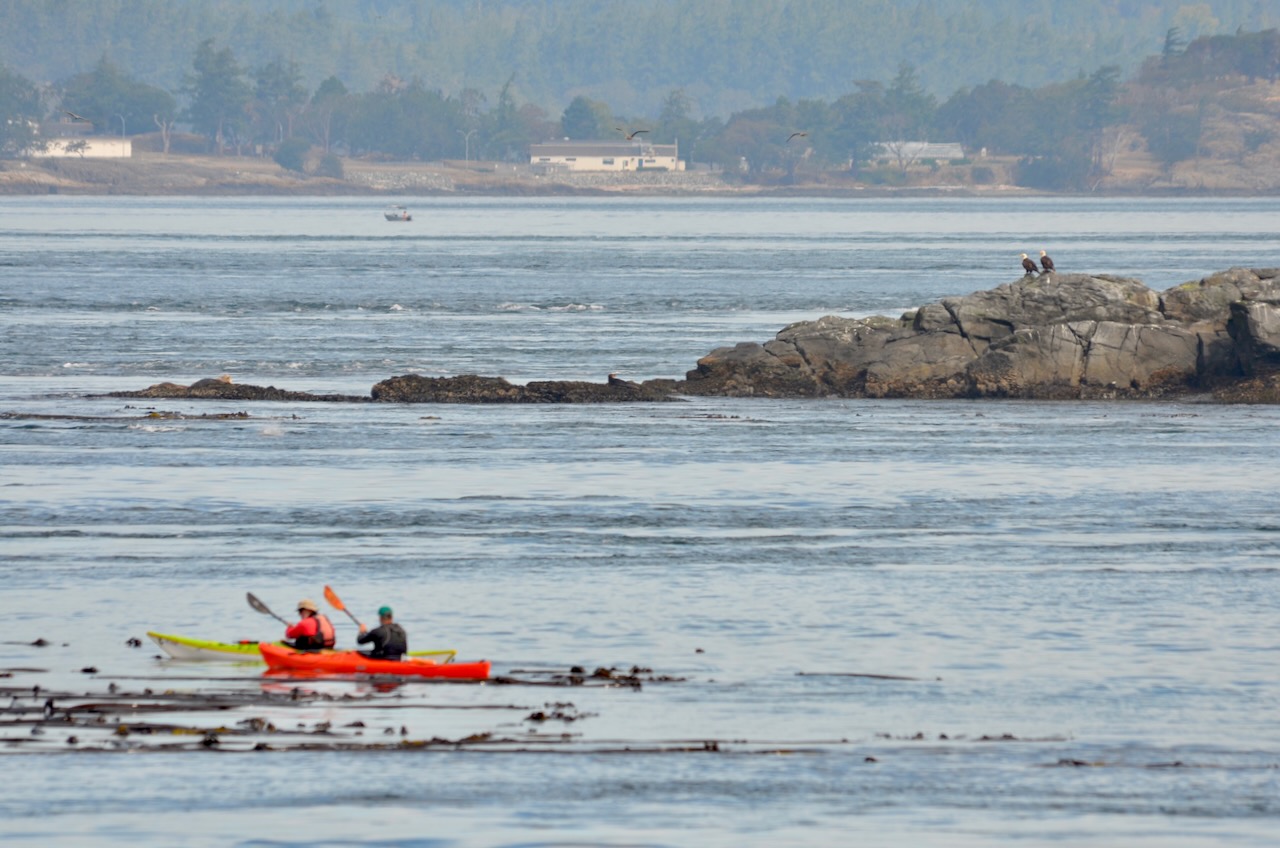First things first! Time to check out the solar panels, while at the same time, keeping track of what animals and birds are being seen. Census is usually conducted on Friday, but since I didn’t arrive until mid-afternoon, I opted to do it today.
The solar panels were in better shape than I expected given the look of the Science Building windows. I remembered all of the valves that needed to be opened to provide water on the generator building roof, so a single trip up the ladder was all that was needed. Once those were taken care of, it was off to tackle the Science Building. There are some great new tools available for reaching the second story windows, but they are quite unwieldy, especially for someone who is just a little over 5 feet tall! As I feared, the gull artwork was baked on, so although there was improvement, the windows were not fully clean when I was done.
Next, a trip up the tower to count marine mammals and gulls. I found a key outside the door as I entered. The fob looked somewhat familiar, but I couldn’t quite place it. I thought one of the guests might have dropped it yesterday, so left it at the bottom of the stairs. A hundred steps up, I remembered why it looked familiar–it was the key to the hatch to the outside of the light. Down 100 steps and back up 100 steps. A double workout for today!
While at the top, I called my friends at Rocky Point Bird Observatory just the other side of Bentinck Island and arranged a neighbourly wave. There is a gap in Bentinck that provides a great view of Race Rocks from the other side.
Census complete, I headed back to ground level. Hmmm..Where are my glasses? You got it–back up at the light! Another trip to the top! Although I had done a count of gulls from the top, I decided to count the young birds again. They are difficult to see from the light. At ground level, I found about three times as many as I had counted from the birds’ eye view.
The sea lions had dumped most of the posts and their concrete blocks off the jetty again. I managed to get them back up before the tide rolled in and repaired the fence–again. I have to say, I felt that I’d put in a full-day’s labour before noon!
Weekly Census
Observed today because of arrival too late on Friday for a fair census
Mammals:
- Steller sea lion: 327 (including entangled female detected yesterday)
- California sea lion: 142
- Harbour seal: 64
Birds:
- Canada Goose: 7
- Black Oystercatcher: 5
- Pigeon Guillemot: 34
- Ruddy Turnstone: 1
- Black Turnstone: 15
- Brandt’s Cormorant 2
- Pelagic Cormorant 30
- Western Gull 2
- California Gull 270
- Glaucous-winged Gull 1042 (including about 300 young)
- Brown Pelican
Facility work:
- Clean the solar panels
- Cleaned windows on the north and west side of Science Building
- Returned posts and concrete blocks to the jetty and repaired the fence
- Topped up batteries
Weather:
- Sky: sunny and clear all day
- Wind: variable 0 – 18 knots
- Sea: rippled
- Air temperature: low 15 °C, high 26 °C
- Seawater temperature at max flood: 11.6 °C
Photos from today:
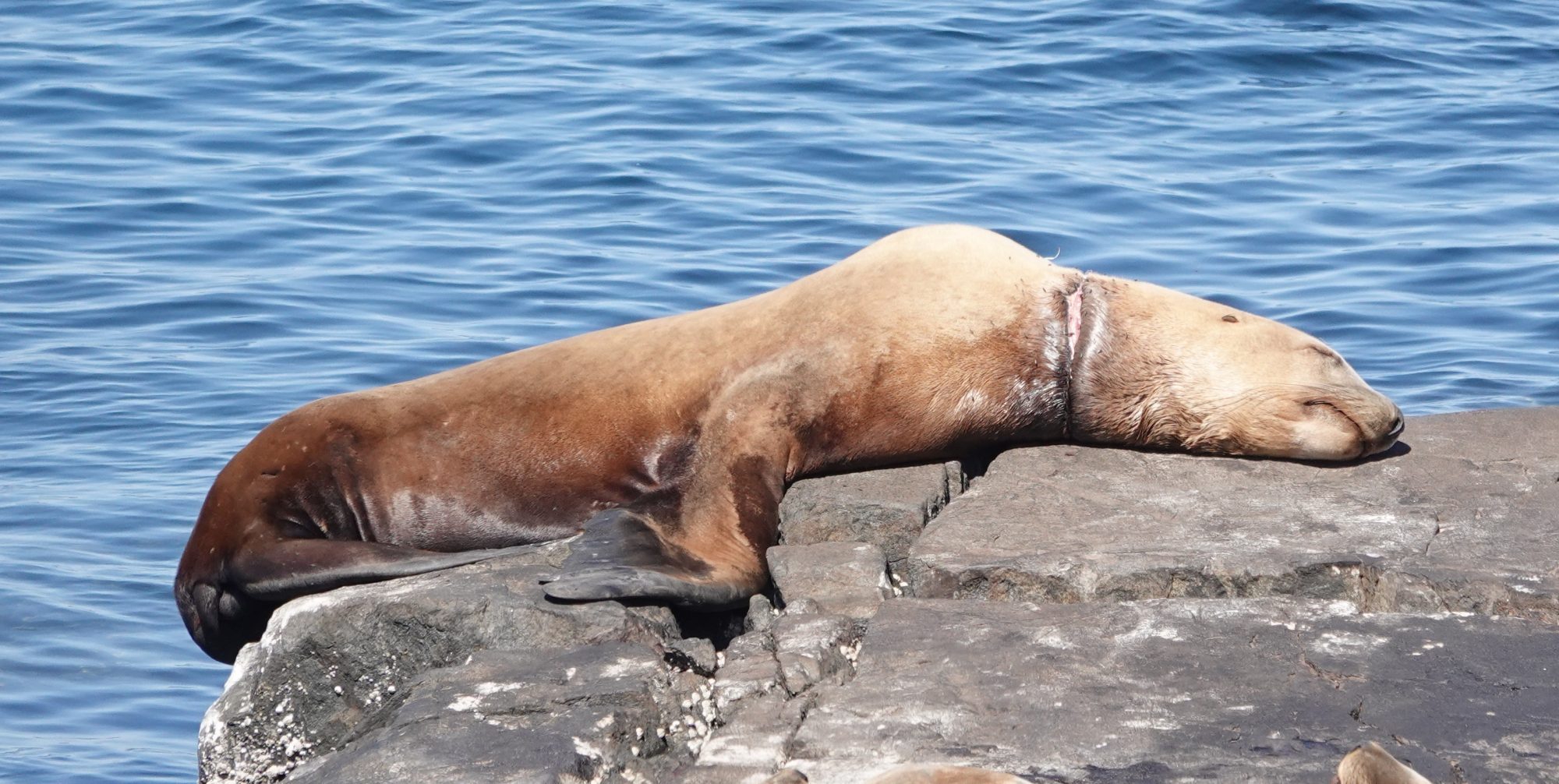
Entangled Sea Lion still being seen near the jetty.
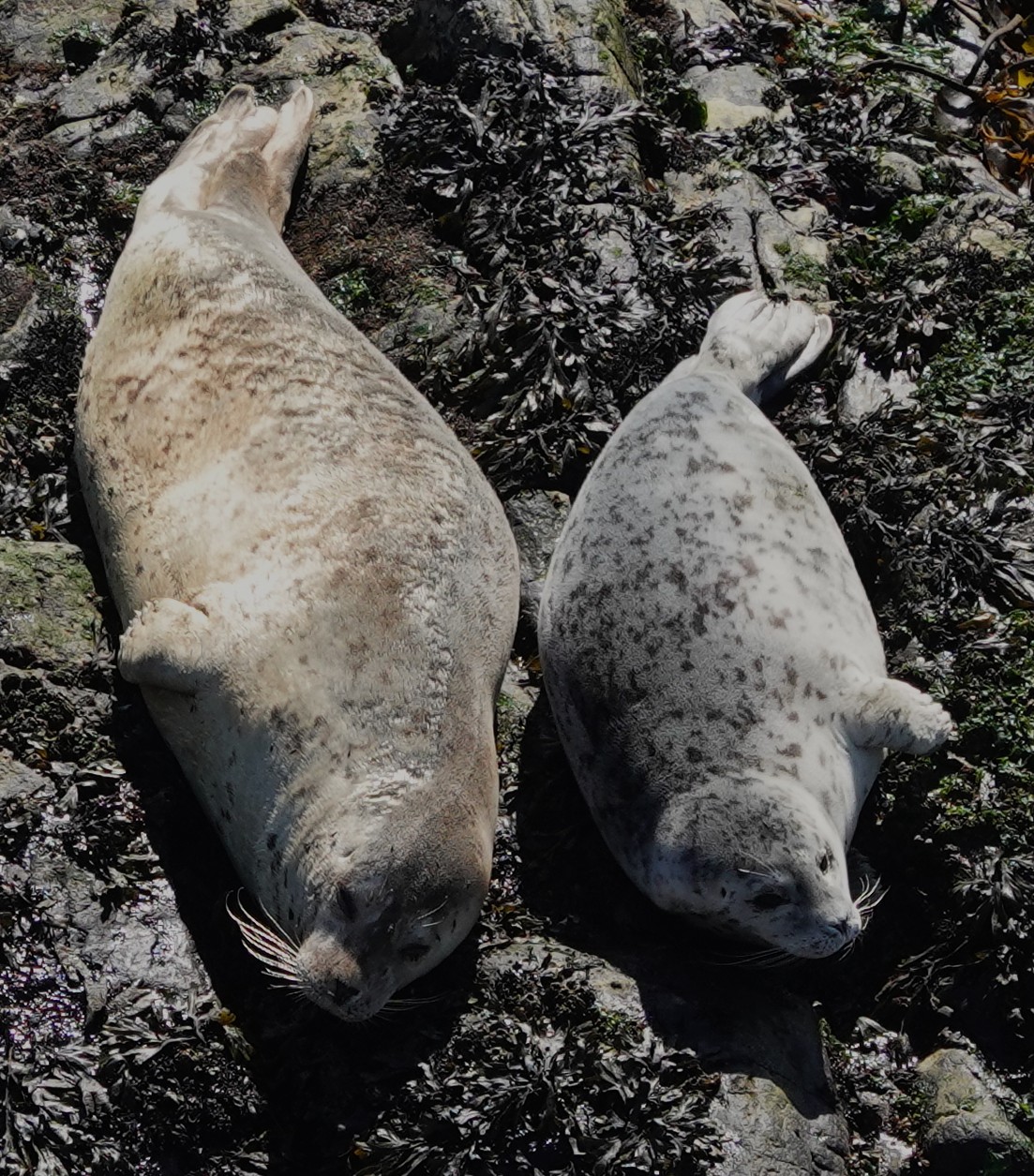
Mom and pup Harbour Seal exuding cuteness
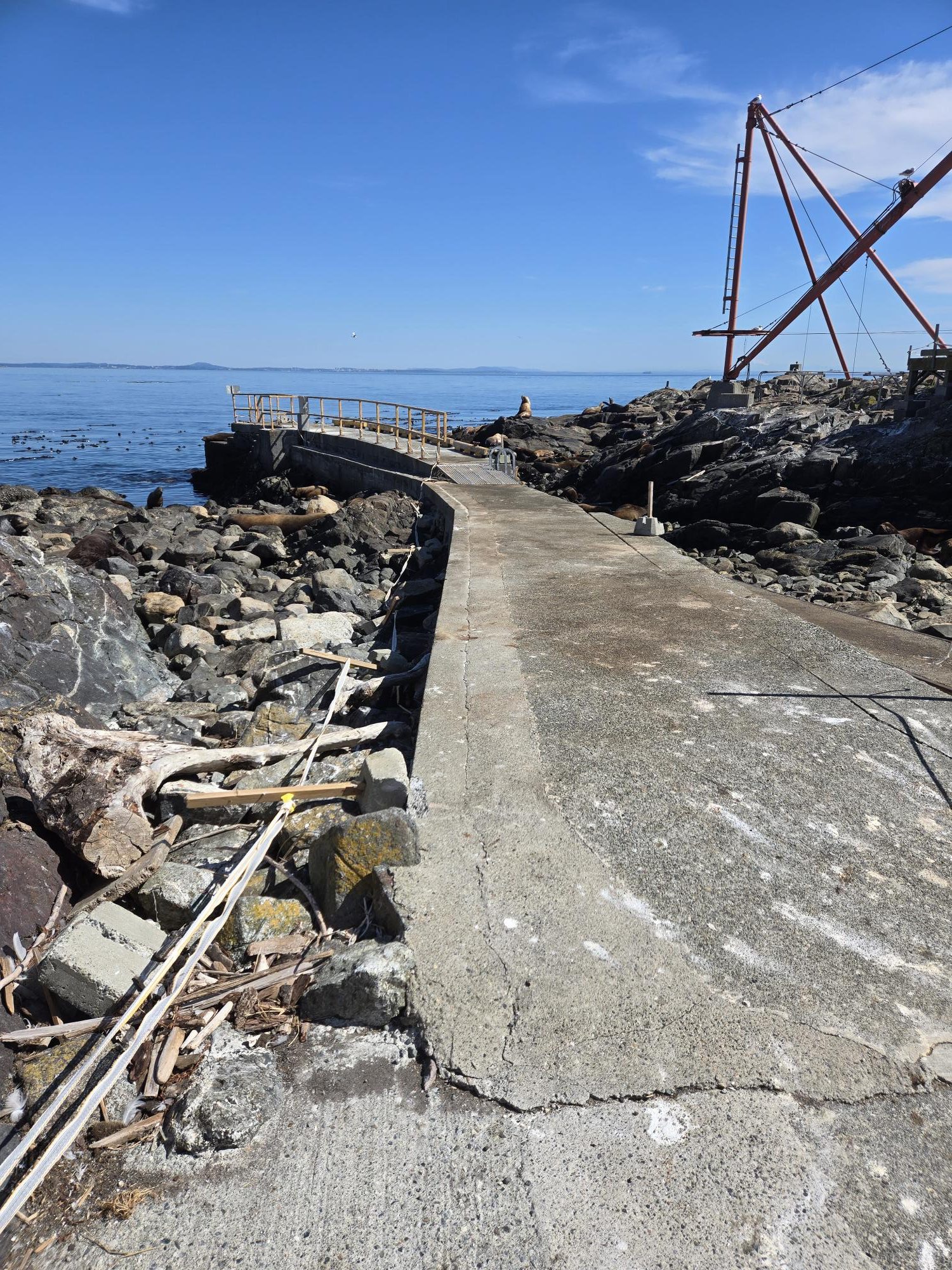
Jetty stripped almost clean of all the fencing posts
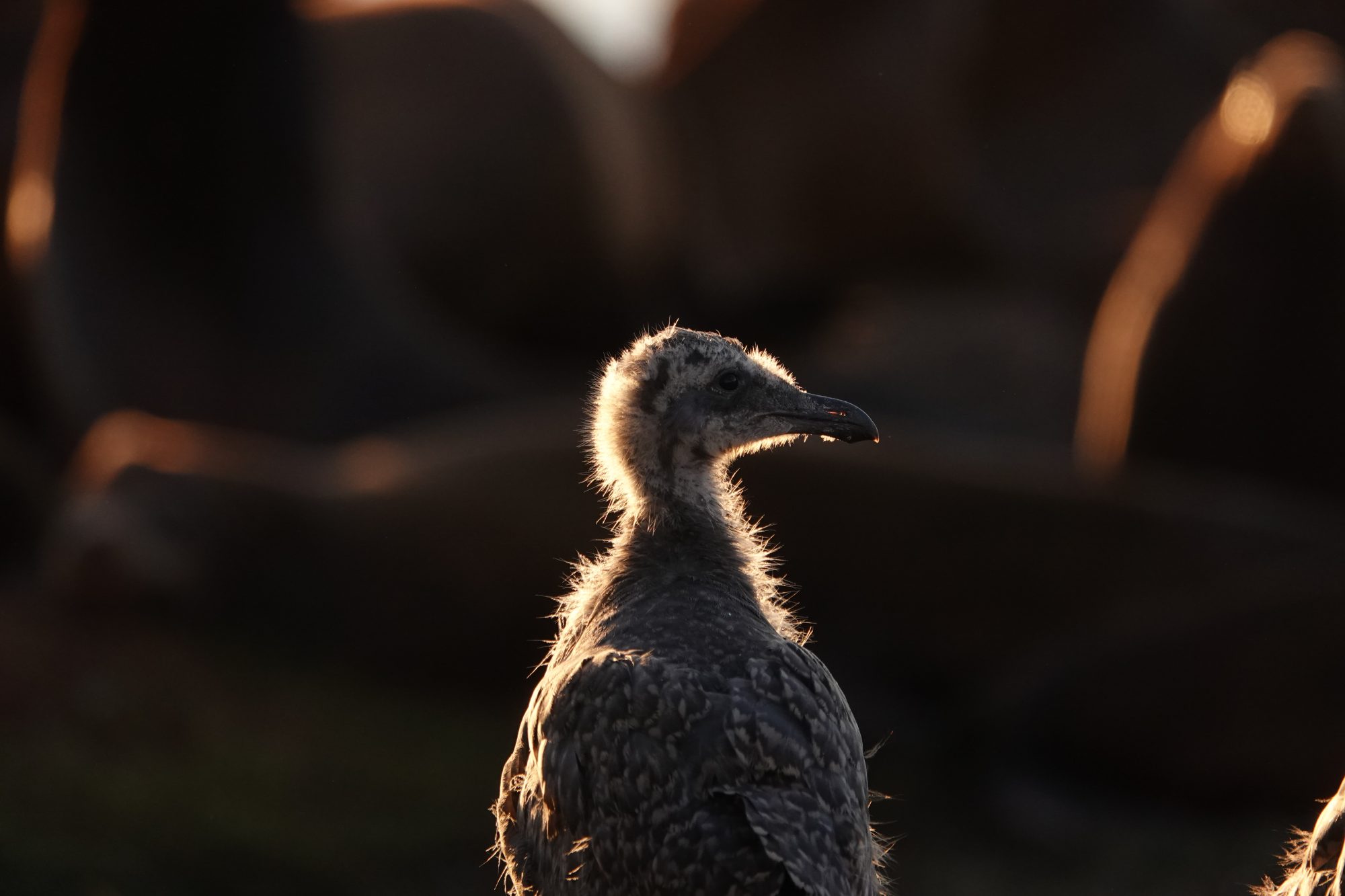
Young Glaucous-winged Gull in the early morning sunlight
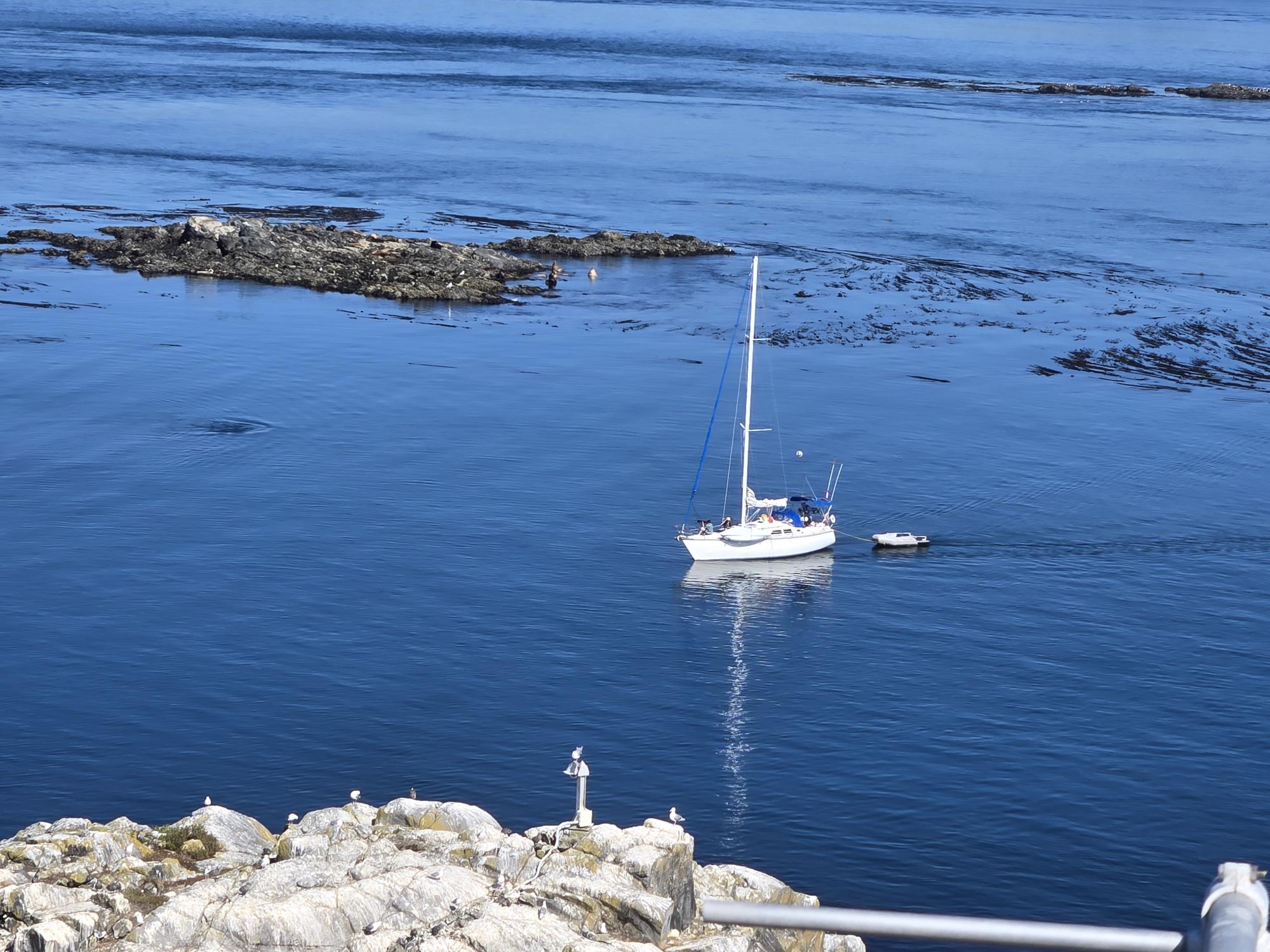
One of several private vessels seen near the rocks today.
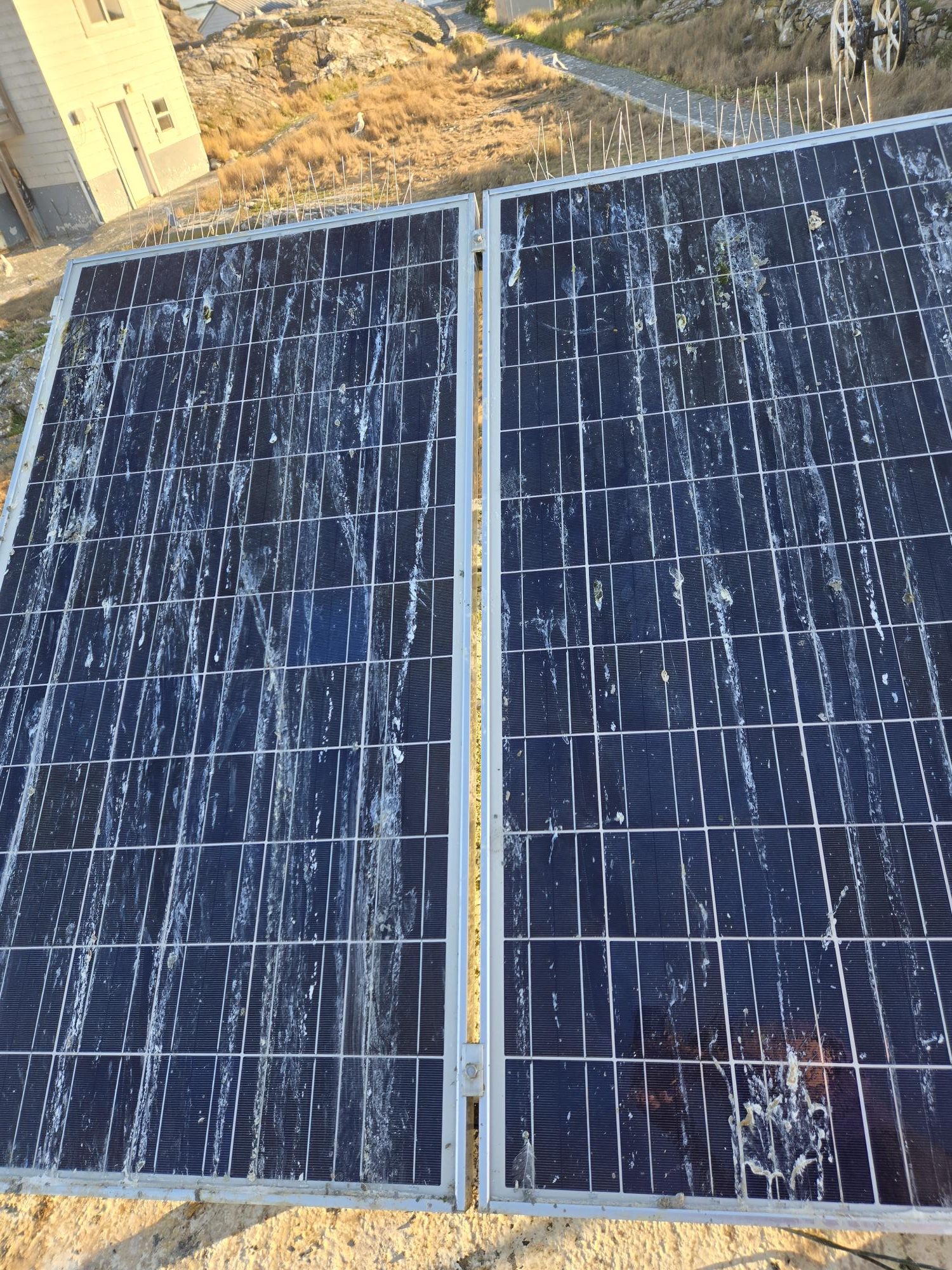
Looks familiar!
